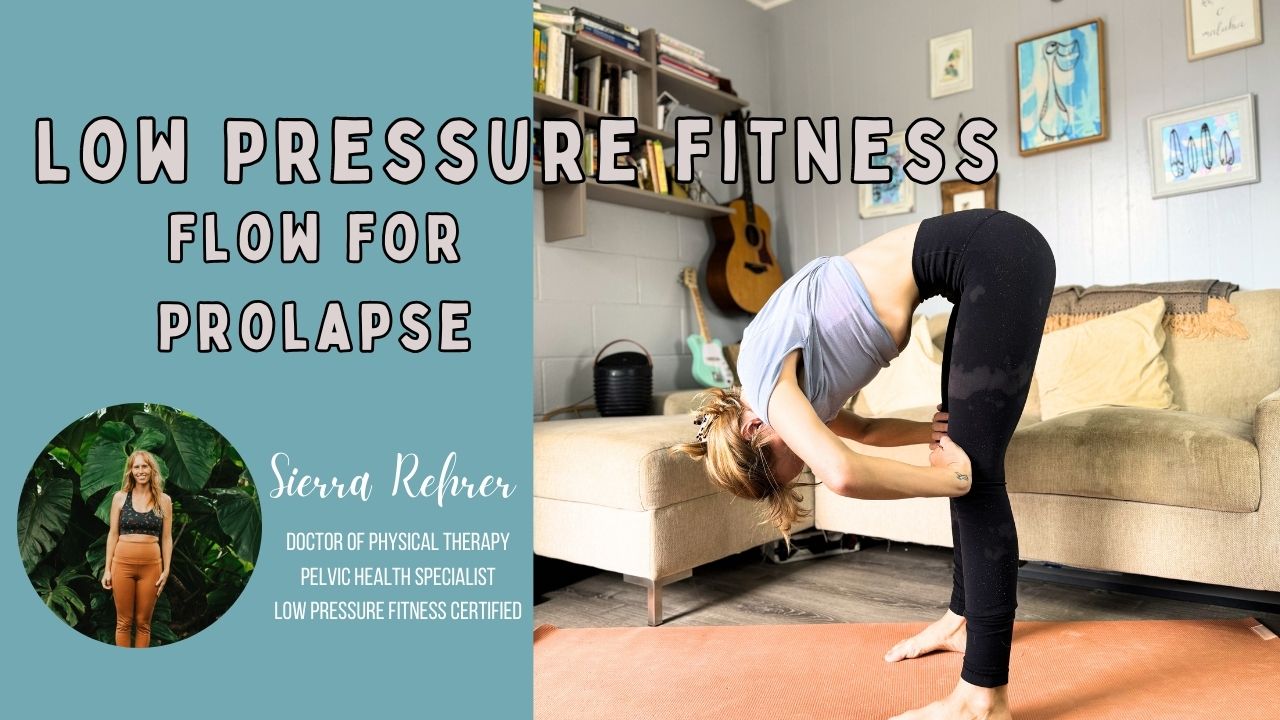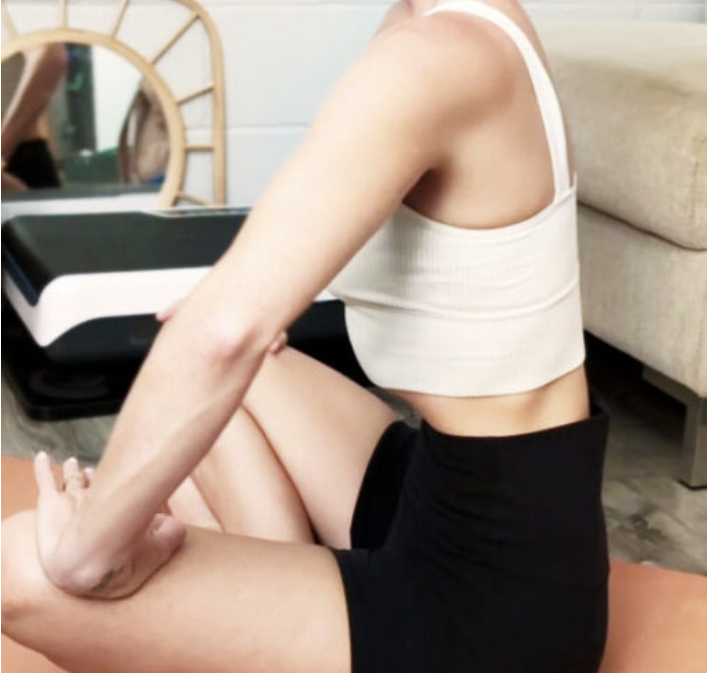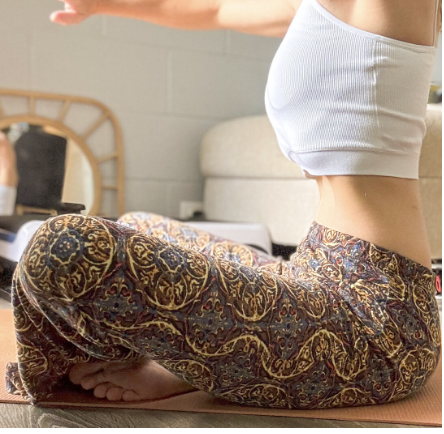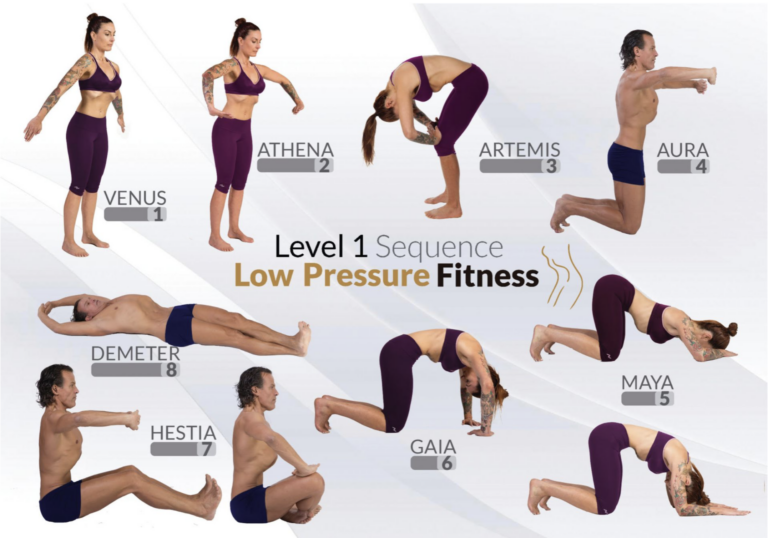Hypopressive Exercise for Postpartum Prolapse Recovery
Prolapse occurs in 30% of women at some point in their lifetime and can be a common condition that occurs during pregnancy and childbirth. This post explains how hypopressive exercise can help with postpartum prolapse recovery.

How does hypopressive exercise help with postpartum prolapse recovery?
Hypopressive exercise (AKA Low Pressure Fitness) does two things:
- Reduces pressure
- Strengthens the pelvic floor and deep core muscles
Pelvic organ prolapse (POP) usually occurs due to increased intra-abdominal pressure, which pushes the abdominal organs down and weakens the pelvic floor muscles. Hypopressive exercise is designed to reduce pressure. Combining breath, posture, and the abdominal vacuum maximizes the pressure-less effect and creates a suctioning that lifts the intra-abdominal organs, simultaneously lifting the pelvic floor muscles. Each hypopressive flow is constructed to relieve pressure in the intra-abdominal cavity as the flow progresses. Expanding the ribcage in a 360-degree direction also reduces pressure from the pelvic floor.
What is postpartum prolapse?
A prolapse, also known as a pelvic organ prolapse (POP), is a condition where the pelvic organs sit lower than they should and may even bulge down through the vagina. In more severe cases, you may even feel tissue coming out past the opening of the vagina.
There are several types of vaginal prolapse:
- Rectocele- Descent of the rectum
- Cystocele- Descent of the bladder
- Urethrocele- Descent of the urethra
- Enterocele- Small bowel herniation
- Uterine Prolapse- Dropping down of the uterus
- Vaginal Vault Prolapse
What are the symptoms of prolapse
- A feeling of heaviness in the pelvis or lower abdomen.
- Feeling that something is protruding out of the vagina- some describe as feeling like they are sitting on a tennis ball.
- Incontinence in some cases.
- Low back pain
- Constipation
How to manage a postpartum prolapse
In some cases, this can require surgery to lift and stabilize the organs in their proper position. In less severe cases, a prolapse can be managed with proper exercise and knowledge of activities to avoid.
What is hypopressive exercise?
Hypopressive exercise is a type of exercise that uses posture and breath to reduce pressure inside the abdominal cavity.
Check out these posts on hypopressive exercise for postpartum prolapse:
Risk Factors for Prolapse
- Age- Usually occurs in women older than 40
- Menopause- Reduced production of estrogen can lead to weaker pelvic floor muscles and supporting ligaments.
- Obesity- Due to increased pressure inside the abdominal cavity
- Hysterectomy- When one organ is removed, there is less support for the remaining organs and more room for descent into the vagina.
- Heavy exercise
- Constipation- Straining can increase pressure down through the intra-abdominal cavity.
- Chronic coughing
- Childbirth
- Injuries
- Prolonged labor
- Larger size of baby
- Use of forceps or vacuum for delivery
- Perineal tearing
- Vaginal wall tearing
- Pelvic floor muscle weakness
Medical Disclaimer
The information on this website is intended solely for educational purposes and cannot substitute for professional medical advice. Please seek input from your primary medical provider if you would like to begin a low pressure fitness program.
References
1. Dr. Kaushik Bharati. Pelvic Organ Prolapse – Types, Causes, Symptoms, Diagnosis, Treatment & Prevention. Medindia. Published March 14, 2017. Accessed January 8, 2025. https://www.medindia.net/health/conditions/pelvic-organ-prolapse.htm







